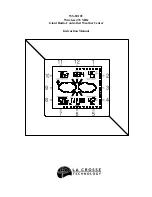
PILOT’S
GUIDE
62
STRIKE FINDER
DIGITAL WEATHER AVOIDANCE
Aircraft Charging
These effects occur as an airplane flies through freezing rain, ice crystals,
dust, sand and snow. Contact with these particles leaves a positive or
negative charge on the air frame. As the aircraft charge builds,
a potential is reached where the charge leaks off the aircraft and antennas,
generating broad band radio frequency noise.This interferes with ADF, HF,
as well as VHF and VOR receivers.
Cross-field currents are generated on aircraft flying in clear air beneath a
charged cloud layer.The magnitude is a function of the potential of the cloud
with reference to ground and the speed of the aircraft.
Streamering
This noise source is generated over dielectric surfaces such as radomes,
fiberglass winglets and other fiberglass panels positioned on frontal impact
areas of the aircraft. As particles strike, they deposit an electron on the
dielectric surface. As more particles impact this isolated pool, the voltage
increases until it reaches the flash over point. When the pool of charge
flashes over the surface of the dielectric material, it generates broad band
radio frequency noise.
This phenomenon is also observed over metal surfaces painted with a high
electric strength paint, or paint buffed to a high polish. In this case, charges
accumulating on the paint generate streamers from a rivet head or screw
fastener. Streamering can be solved by coating the non-conductive surface
with high resistance paint. Such paint quietly bleeds the charged particles
to the aircraft fuselage.
Corona Noise
This occurs when the aircraft accumulates sufficient charge due to aircraft
charging and/or cross fields to ionize air around wing tips, vertical or
horizontal stabilizers and the other protrusions. Over 5,000,000 volts have
been measured on General Aviation aircraft in flight. As current bleeds off
trailing edges, it generates radio frequencies that sound like loud hissing
in aircraft receivers. The charging also causes antennas to go into corona
(bleeding off charge). When this happens the noise appears like a strong
signal to the receiver. In some cases the automatic gain control circuit,
sensing noise as a strong signal, desensitizes the receiver to the point where
the receiver may go perfectly quiet.The Pilot assumes no one is calling, but
in reality corona current has, for all practical purposes, shut down the
receiver. When aircraft voltage lessens and antenna corona current stops,
receiver AGC returns to normal and communications can continue.
Strike Finder Pilot's Guide fix 9/19/05 10:59 AM Page BO




































